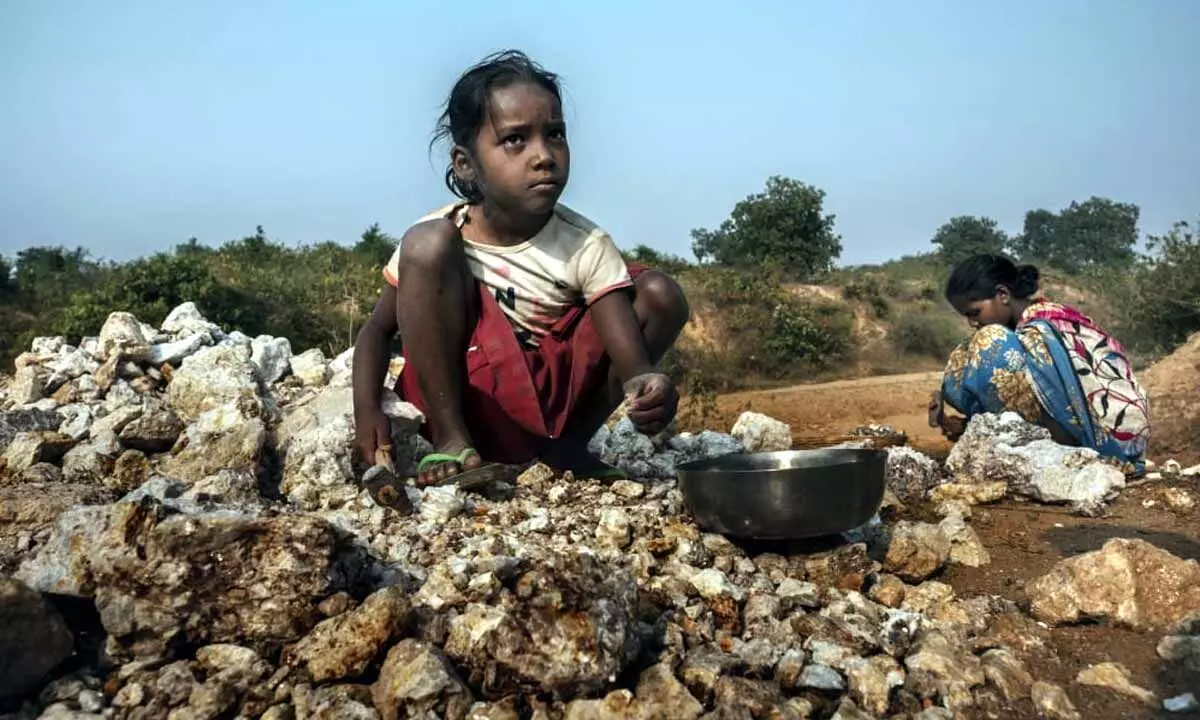How childhood getting lost in the country's mica mines
The stories of lost childhood are nothing new. With yet another World Day against Child Labour (June 12) drawing closer, grim statistics, stark reality and bitter truths overwhelm us.
image for illustrative purpose

The stories of lost childhood are nothing new. With yet another World Day against Child Labour (June 12) drawing closer, grim statistics, stark reality and bitter truths overwhelm us. There is talk of stringent eradication measures and ways to implement them effectively. Often, intertwined within those well-calculated statistics, detailed analysis and numerals, there are simple tales that reveal the reason as to why child labour still exists in communities all over the world, including India. Child labour can't be tackled in isolation. The cause is deeply ingrained in the socio-economic fabric of the communities and the lives they lead. It is time to lend an ear to the stories of innocent kids in the hinterland of the country.
Significantly, CRY and its partner organization recently conducted a baseline study in the mica belt in the country mostly in Jharkhand, the results of which mirror the ground reality in this region. Lives and livelihoods in these impoverished villages revolve around the sharp, rocky, barren dunes of the mica fields. Trudging for miles through muddy tracks, collecting mica scrap from 7.7-30 am to 5pm come rain or shine, and selling them to dealers for a meager Rs 200 (per family) – hours pass into days and days into months. A lifetime goes by. So it has been for generations. Children are enrolled in schools, but they do not attend classes. Their hands are cut and bruised, they often develop breathing problems and can hardly remember the last time they ate a nutritious meal, but when a new morning comes, they are back at the mines with their families, doing what they know best. They wriggle themselves into freshly-dug 'rat holes' for pellets and their parents wait outside with bated breath. How much scrap would they be able to collect before dusk sets in? Or, would they be able to come out alive? The mud mounds can cave in, trapping anyone inside. It has happened in the past! At the end of the day, it is a question of money in the hand, and the families have little choice but to 'push' their children into dhibra (mica) collection. As revealed in the baseline study, most of the children were found to be suffering from malnutrition.
When CRY and its partner organization set out to work in the region about 18 months ago, the objective was to ensure that the people here get an opportunity to lead a normal, healthier and safer life with access to basic schooling, health facilities, and alternative sources of income. But first and foremost, people had to be convinced that there is hope beyond despair and change can be ushered in. Planned and sustained programmes over the past year or so have started to impact lives. Enrolment in schools has increased, with many parents realizing that education is necessary, even though they insist on their children working the mines for at least a few hours every day. Apart from the remedial classes that have turned out to be immensely beneficial, volunteers and teachers check the school attendance register regularly and identify children who are enrolled but hardly ever attend school. Families are being encouraged to include their children in the immunization programme. Adolescent girls with low haemoglobin count get IFA tablets and are also counselled on ways to practice hygiene sanitation during periods. It looks like there is a ray of light at the end of the tunnel.

